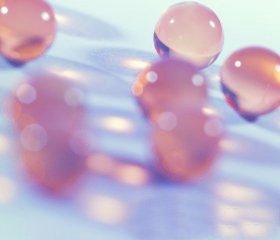Международный эндокринологический журнал 5 (45) 2012
Вернуться к номеру
Diagnostic criteria, clinical features, and incidence of thyroid storm based on nationwide surveys
Авторы: Akamizu T., Satoh T., Isozaki O. et al.
Рубрики: Эндокринология
Разделы: Справочник специалиста
Версия для печати
Background. Thyroid storm (TS) is life threatening. Its incidence is poorly defined, few series are available, and population-based diagnostic criteria have not been established. We surveyed TS in Japan, defined its characteristics, and formulated diagnostic criteria, FINAL-CRITERIA1 and FINAL-CRITERIA2, for two grades of TS, TS1, and TS2 respectively.
Methods. We first developed diagnostic criteria based on 99 patients in the literature and 7 of our patients (LIT-CRITERIA1 for TS1 and LIT-CRITERIA2 for TS2). Thyrotoxicosis was a prerequisite for TS1 and TS2 as well as for combinations of the central nervous system manifestations, fever, tachycardia, congestive heart failure (CHF), and gastrointestinal (GI)/hepatic disturbances. We then conducted initial and follow-up surveys from 2004 through 2008, targeting all hospitals in Japan, with an eight-layered random extraction selection process to obtain and verify information on patients who met LIT-CRITERIA1 and LIT-CRITERIA2.
Results. We identified 282 patients with TS1 and 74 patients with TS2. Based on these data and information from the Ministry of Health, Labor, and Welfare of Japan, we estimated the incidence of TS in hospitalized patients in Japan to be 0.20 per 100,000 per year. Serum-free thyroxine and free triiodothyroine concentrations were similar among patients with TS in the literature, Japanese patients with TS1 or TS2, and a group of patients with thyrotoxicosis without TS (Tox-NoTS). The mortality rate was 11.0 % in TS1, 9.5 % in TS2, and 0 % in Tox-NoTS patients. Multiple organ failure was the most common cause of death in TS1 and TS2, followed by CHF, respiratory failure, arrhythmia, disseminated intravascular coagulation, GI perforation, hypoxic brain syndrome, and sepsis. Glasgow Coma Scale results and blood urea nitrogen (BUN) were associated with irreversible damages in 22 survivors. The only change in our final diagnostic criteria for TS as compared with our initial criteria related to serum bilirubin concentration > 3 mg/dL.
Conclusions. TS is still a life-threatening disorder with more than 10 % mortality in Japan. We present newly formulated diagnostic criteria for TS and clarify its clinical features, prognosis, and incidence based on nationwide surveys in Japan. This information will help diagnose TS and in understanding the factors contributing to mortality and irreversible complications.
Thyroid. — June 2012

